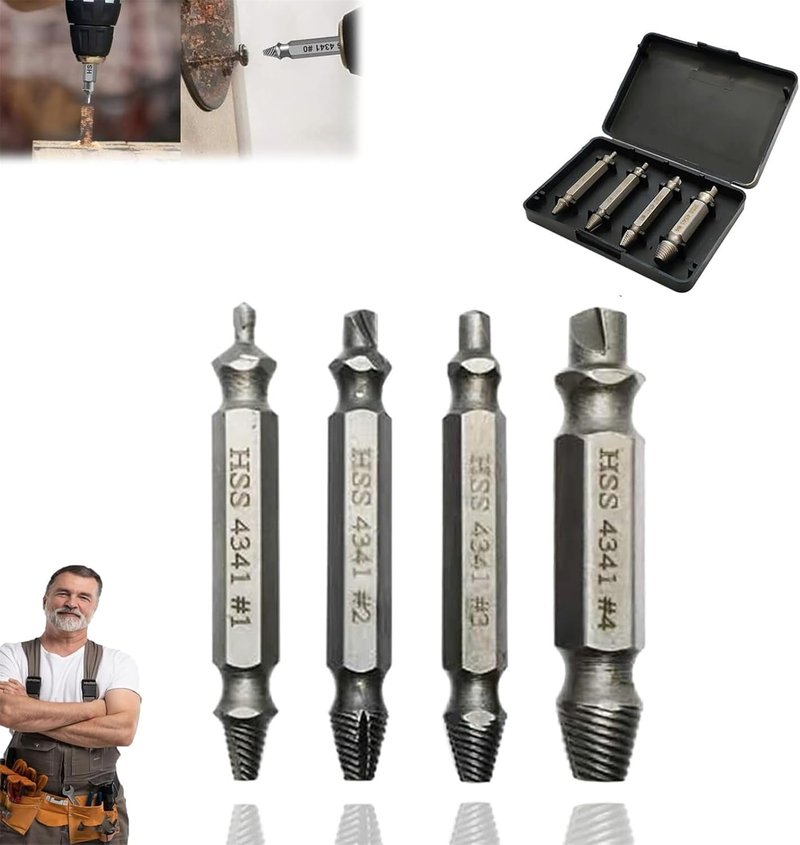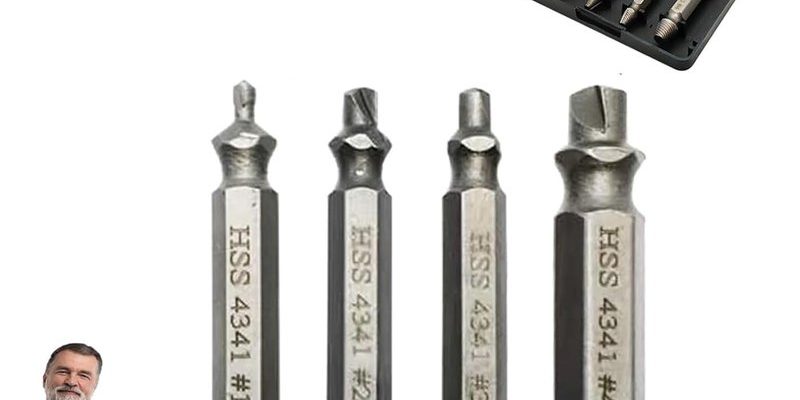
In this article, we’ll dive into the best tools for removing stripped screws from recessed hardware. Whether you’re an experienced DIYer or just starting out, I’ve got you covered. We’ll explore everything from screw extractors to simple household items that might already be in your toolbox. This way, you’ll never have to let a stripped screw derail your project again.
Understanding Stripped Screws
Let’s start with the basics. A stripped screw is one that has worn down around the head, making it difficult to grip with a screwdriver. You might be wondering how this happens, and it can be due to several reasons such as using the wrong-sized screwdriver, over-tightening, or rust. Recessed screws, like those found on pocket doors, can be particularly tricky since they are often deeper in the hardware.
When you try to turn a stripped screw, you might find that your screwdriver just keeps spinning. It’s a frustrating scenario, but it’s not the end of the world. With the right tools and techniques, you can still get that screw out. Let’s look at some effective tools designed to rescue you from this predicament.
1. Screw Extractors
Screw extractors are specialized tools made for removing stripped screws. Think of them as your screw-saving superheroes. They come in various sizes, usually in a set, and are designed to grip the stripped screw head tightly. Here’s how they work:
- Drill a Hole: First, you need to drill a small hole in the center of the stripped screw. This is usually a precise process, so take your time.
- Insert the Extractor: Once your hole is drilled, insert the screw extractor. Most extractors are tapered, which means they’ll dig in as you turn them counterclockwise.
- Remove the Screw: As you turn the extractor, it will grab onto the stripped screw and allow you to pull it out. Voila!
When choosing a screw extractor, look for a high-quality set with various sizes. A popular choice is the Irwin Screw Extractor set, known for its durability and effectiveness.
2. Rubber Band Method
Sometimes, the simplest solutions are the best. Have you ever thought about using a rubber band to remove a stripped screw? Here’s the thing: a rubber band provides added grip that can help your screwdriver catch the stripped edges.
To try this method, follow these steps:
- Place the Rubber Band: Put a wide rubber band over the stripped screw head. This will give your screwdriver extra friction.
- Use the Right Screwdriver: Select a screwdriver that fits well with the screw size. A snug fit is essential.
- Turn Slowly: Apply gentle pressure while turning the screwdriver counterclockwise. The rubber band should fill in the gaps and help turn the screw.
This method often works wonders for mildly stripped screws and can save you time and money.
3. Pliers for Grip
If you can see the head of the stripped screw, using a pair of pliers might be your best bet. Pliers can give you the leverage needed to twist and pull the screw out.
Here’s how to do it:
- Choose the Right Pliers: Needle-nose pliers can grasp fine screws, while channel-lock pliers work better for larger heads.
- Get a Good Grip: Firmly grasp the head of the screw. You may need to adjust your grip a few times to find the sweet spot.
- Twist and Pull: Slowly twist the pliers counterclockwise while pulling outward. With enough force, the screw should come free.
Using pliers is particularly useful for screws that are just slightly stripped.
4. Impact Drivers
If you’re dealing with a seriously stuck screw, an impact driver can be a game changer. This tool uses a combination of rotational and hammering force to loosen screws that just won’t budge.
Here’s a brief outline of how impact drivers work:
- Set the Driver: Place a suitable bit in the impact driver that fits the screw head.
- Position the Tool: Align the driver with the screw head. Make sure it’s steady, as you don’t want to slip.
- Apply Force: As you depress the trigger, the tool will provide both turning and hammering action to free the screw.
Impact drivers can be on the pricey side, but they’re incredibly effective, especially if you frequently find yourself in situations like this.
5. Left-Handed Drill Bits
You might find this one interesting—left-handed drill bits! These specialty bits rotate in the opposite direction of traditional bits. As they drill into the stripped screw, they might catch and extract it without needing any extra tools.
Using left-handed drill bits is pretty straightforward:
- Drill Carefully: Use a left-handed drill bit in a power drill, and drill into the center of the stripped screw.
- Watch for Movement: As the bit catches, the screw may start to turn and come loose.
- Finish Up: Once the screw is free, you can simply remove it and replace it with a new one if needed.
This method not only helps you extract the screw but also prevents further damage to your hardware.
6. Professional Help
Sometimes, despite your best attempts, a stripped screw can still be a stubborn problem. If you find yourself stuck, consider calling a professional.
Here’s why this might be a good idea:
- Expertise: Professionals know the ins and outs of hardware and can often get the job done much quicker.
- Tools: They have access to specialized tools that most homeowners may not have.
- Prevent Damage: An expert can remove the stripped screw without damaging the surrounding area, saving you potential repair costs later on.
While it’s always great to tackle DIY projects yourself, sometimes it’s just worth it to call in a pro.
Dealing with stripped screws, especially in recessed hardware like pocket door pulls, doesn’t have to be a nightmare. With the right tools—like screw extractors, rubber bands, pliers, impact drivers, and left-handed drill bits—you can tackle this challenge head-on.
Whether you’re taking on a small home repair or diving into a bigger project, knowing how to remove those tricky screws will save you time and frustration. Remember, if all else fails, don’t hesitate to reach out for professional help. You’ve got this! Happy DIYing!
